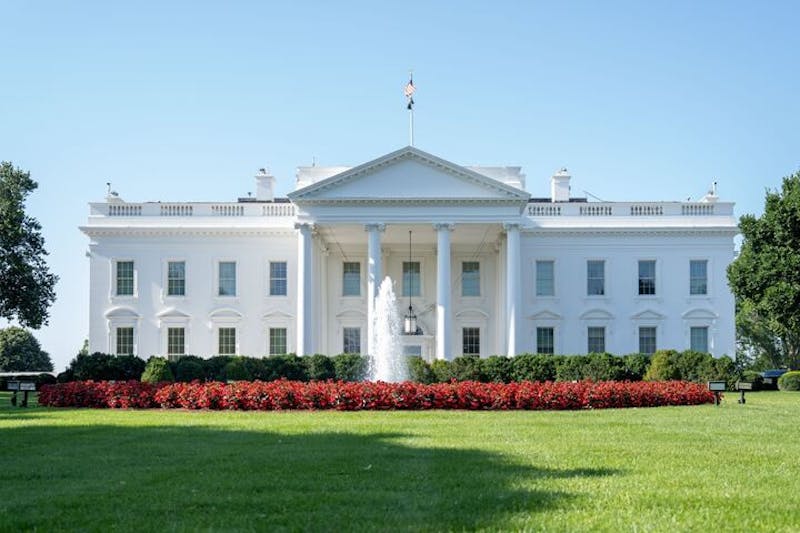This school year marks the 40th since Penn adopted its modern undergraduate-admissions policy. Not that you'd know: The University hasn't held any essay competitions or thrown any parties, as it did last year in honor of Benjamin Franklin's 300th birthday.
But, with all due respect to Ben, I would argue that we've misplaced our communal priorities. Because, in the last four decades, no person or text has changed the University as much as its admissions policy, which helped lower Penn's acceptance rate from 60 to 17.7 percent and, in its first three years, tripled the number of black students.
Here's the background. In 1967, the University adopted a 50-page document crafted by a committee of 16 professors led by Dan McGill. The "McGill Report," as it was known, was Penn's first real admissions policy because the University hadn't needed one before.
Prior to 1967, Penn had admitted most applicants who met its "minimum standards of academic qualification." But, as the report explained, "the imbalance between admission seekers and available spaces has become increasingly acute."
So the McGill Report instituted a "predictive index" by which Penn could estimate applicants' freshman-year college grades. The index was a formula that combined applicants' scores on the SAT I and SAT IIs (known then as Achievement Tests) and high-school class ranks.
Students whose predicted grades were sufficiently high would be considered for admission under the "regular procedure." Conversely, those with sub-par predicted grades were considered under the "special procedure."
The McGill Report allotted 90 percent of an incoming class to "regular procedure" applicants, but that wasn't enough to accommodate them all. So Penn practiced point-based affirmative action for all students with sufficiently high grades in order to distinguish between them.
Regular-procedure students could be awarded 15 points, out of a possible 100, for being an athlete, 20 points for being a minority or a member of an underrepresented geographic area or socioeconomic class and 10 points for being a legacy.
And Penn designated the remaining 10 percent of class positions to the aforementioned special procedure students.
These were "academic risks": low-scoring athletes, minorities, legacies and "applicants endorsed by trustees, political figures, important alumni and other persons closely identified with the welfare of the University."
In a nutshell, that's the 1967 McGill Report. In 1972, a new committee did revise the Report, but few of the revisions were followed. Also, in the last 30 years, Penn hasn't used the point system (which the Supreme Court ruled unconstitutional in 2003) and in the last few years, it has barely used the index, since the applicant pool has been strong.
Which brings me back to our communal priorities.
Penn has always had a mixed record with regards to discussing admissions policy. In some instances, the policy was ignored, the most prominent example of this being the predictive index. Since 1967, various subcommittees of the University Council have urged the Office of Admissions to conduct a study of the index's accuracy by comparing admitted students' predicted grades to the grades they actually earned at Penn.
It never happened - because Penn never raised the money for an electronic database and because the Office of Admissions often declined to share its data with other groups.
But in 1992, psychology professors Jonathan Baron and Frank Norman published their own study of the index with data for Penn's entering classes of 1983 and 1984 that they were forced to take from another professor's study of retention rates (a sign of the lack of data).
Baron and Norman concluded that the SAT was useless for predicting students' grades and shared their results with administrators. But the organization that crafts the SAT, the Educational Testing Service, said the test deserved its place in the index because it predicted minority students' grades well.
Baron and Norman found no evidence for that, but administrators decided not to change the index.
At least they had the debate. Today, it seems much of the administration is focused more on posthumous birthdays than living policy. Indeed, the University Council's Committee on Admissions and Financial Aid hasn't filed its annual report in more than two years.
Thankfully, the Office of Admissions is still on the ball, planning this year to study the recently adopted Common Application's effect on admissions. The final report should be interesting, especially since Princeton's yield unexpectedly increased after it began accepting the Common App.
But more than that, the report should be an opportunity for Penn to reassess the very policy that constructed its community in the first place. Because regardless of our affinity for Franklin, we wouldn't have been here celebrating his birthday if we had never been admitted in the first place.
Gabriel Oppenheim is a College sophomore from Scarsdale, N.Y. His e-mail address is oppenheim@dailypennsylvanian.com.
The Daily Pennsylvanian is an independent, student-run newspaper. Please consider making a donation to support the coverage that shapes the University. Your generosity ensures a future of strong journalism at Penn.
DonatePlease note All comments are eligible for publication in The Daily Pennsylvanian.







